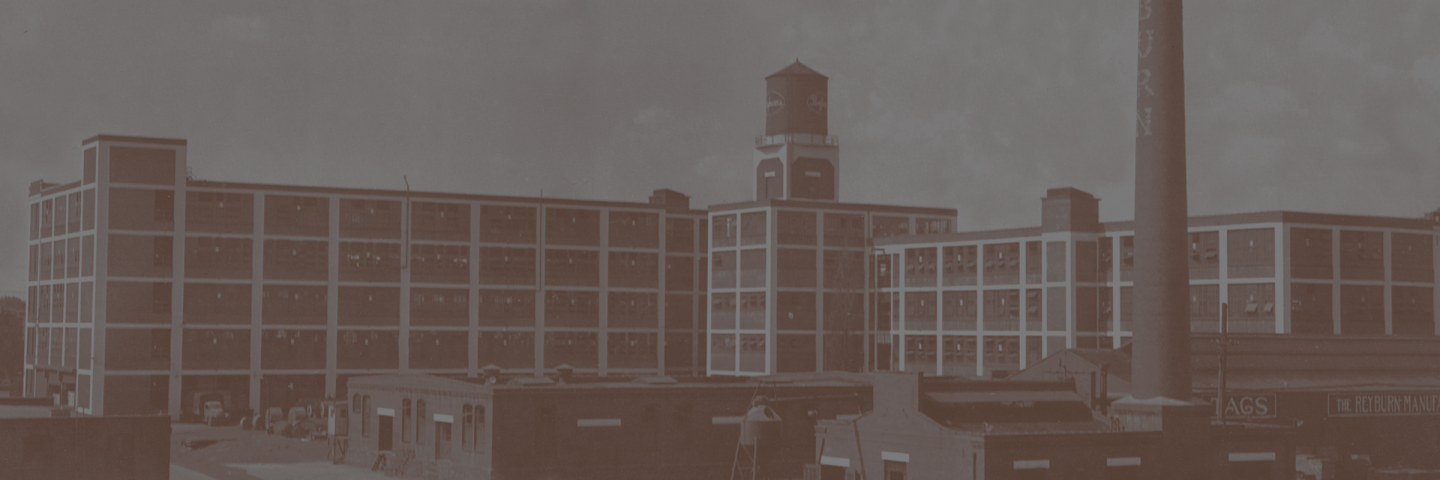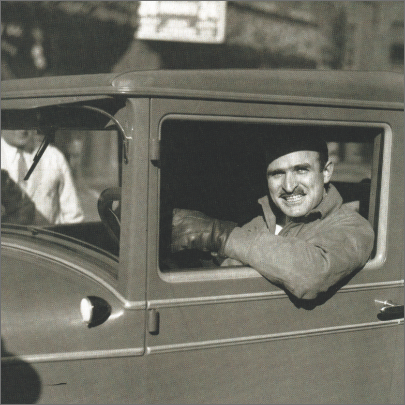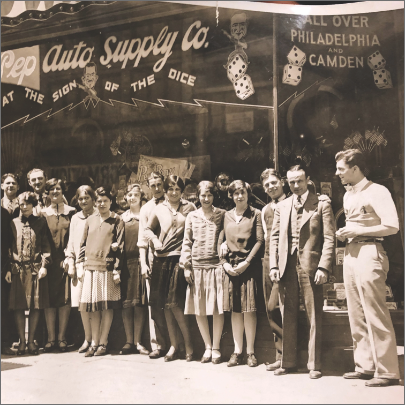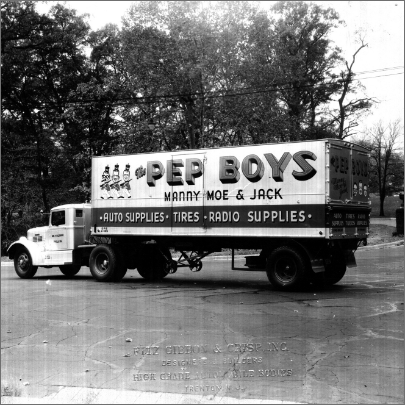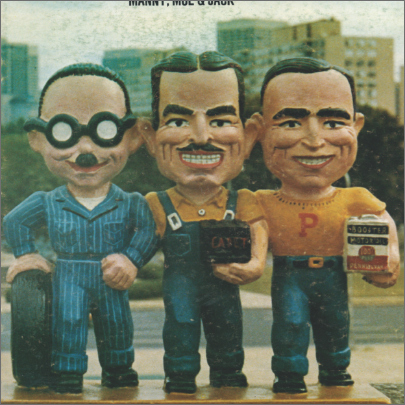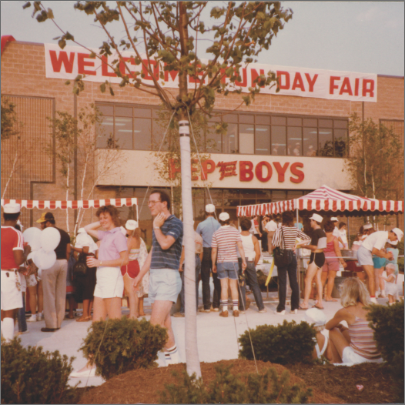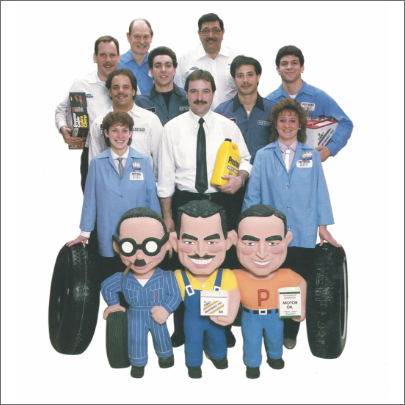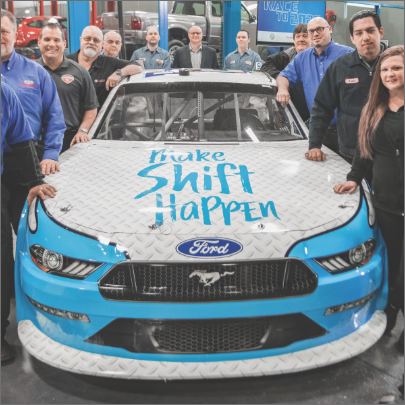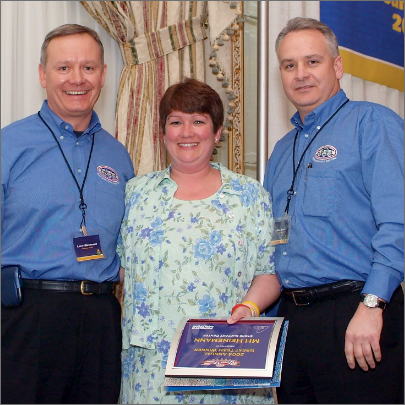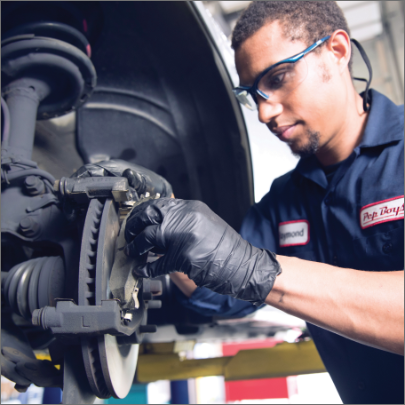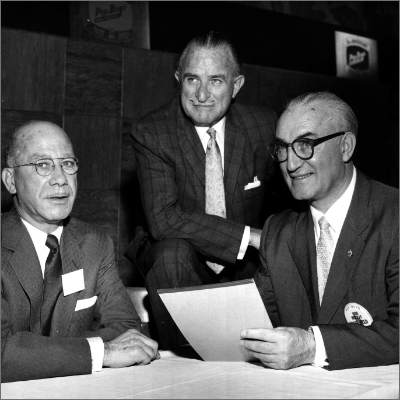
It was his third attempt, but Maurice "Moe" Strauss knew he could get his auto parts supply shop off the ground if he could just find the right mix. He had a sharp mind for business, but he needed someone who could focus on the numbers—and a partner or two with more naturally affable dispositions. His close friends from the Navy—Emanuel "Manny" Rosenfeld, W. Graham "Jack" Jackson, and Moe Radavitz—fit the bill, and in 1921, the four opened their first store on North 63rd Street in West Philadelphia.
LEARN MORE

Despite the hardships of the Great Depression, the business was expanding at a breathtaking rate as new stores opened in states across the East and in California. The Boys were focused on ensuring their customers always got the best possible value—which didn't always sit well with competitors and manufacturers who wanted to control pricing.
LEARN MORE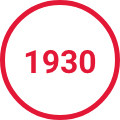
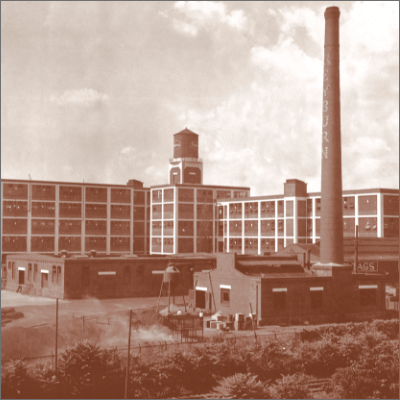
Moe's roots were in Europe. The son of two Russian immigrants, he felt the winds of war picking up before most folks in the U.S. knew what was coming. He knew that rubber would soon become scarce, and that customers were going to lose access to replacement parts they'd sorely need in the coming years. He began stocking his warehouse with whatever tires he could buy. When World War II began to impact the American economy, Pep Boys was the only store that carried and sold rubber tires.
LEARN MORE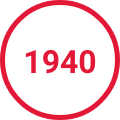
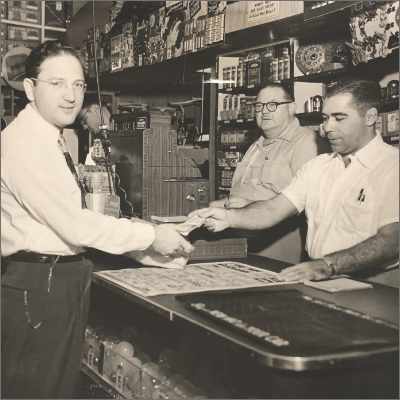
They say imitation is the sincerest form of flattery. If that’s the case, Pep Boys was getting a lot of compliments from copycats like the Prep Boys, the Pop Boys, the Pep Girls (Fanny, Flo, and Jackie), and more—a testament to the strength of the brand and The Boys’ now famous faces.
LEARN MORE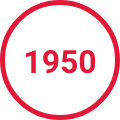
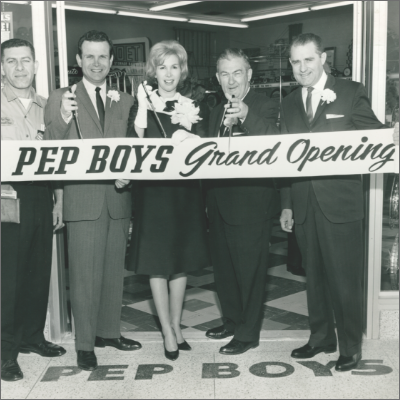
For the Pep Boys, the '60s marked a decade of expansion. Moe's son Robert led the move into Texas and combined the East and West branches of the business into a single, unified organization—a move that would allow the company to open 43 new stores. Moe moved to California for part of each year, becoming a much-loved member of the storied Friars Club of Beverly Hills.
LEARN MORE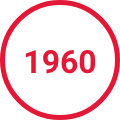
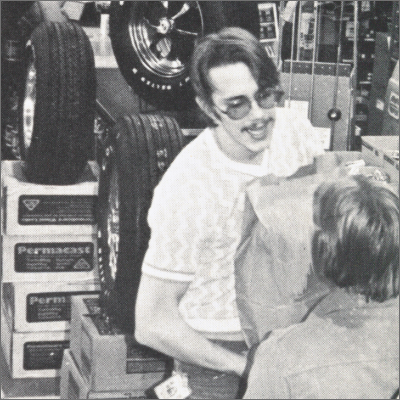
Pep Boys reached the '70s as a family-oriented, low-tech retailer with strong presence on the coasts, but not much in between. Though combining the East and West arms of the business had allowed growth, more needed to be done. Moe Strauss used to believe that if sales got high enough, you'd have profits because, as he was fond of saying, "You can't cut a cake without crumbs." That approach worked for a long time, but just like the culture and technology of the time, things began to evolve quickly—and The Boys evolved with it.
LEARN MORE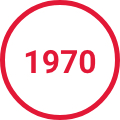

Manny and Moe’s love for pushing the brand to new heights lived on and thrived in the technological flourish of the ‘80s. Animated mascots would be created, with The Boys receiving a cosmetic update in 1987, going 3D for the first time. The business itself would be getting a shiny new model soon, too. The service and repair segments had become the fastest-growing segments by ‘84, foreshadowing a big shift in the business.
LEARN MORE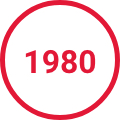
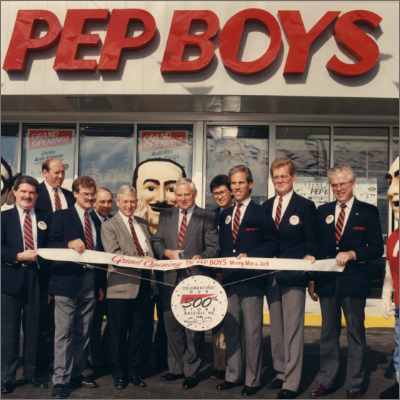
Something was off. It wasn’t television, print, or radio coverage. The sponsorships were lining up, and each gear in the business operations machine was running smoothly, for the most part. The brand and business had evolved, but one major change was still to come. In 1992, it clicked—the first bilingual catalogue was published for millions of Spanish-speaking drivers across the country. Before the decade was through, Pep Boys had opened its first store in Puerto Rico, and was expanding its presence across the island.
LEARN MORE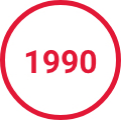
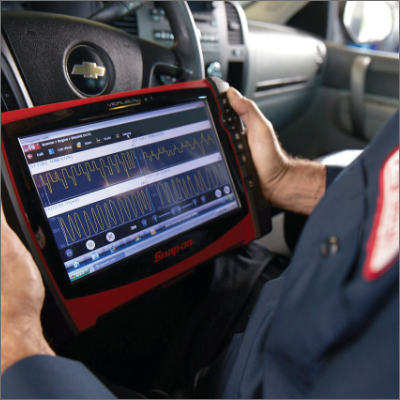
Auto service quickly became the majority of Pep Boys’ business in the new century, as "Do-It-For-Me" customers outnumbered DIY customers. Pep Boys continued to adapt and respond to trends, offering express services, designing flexible and mobile options for fleet customers, and starting a scholarship program for aspiring technicians. One thing that never changed was Pep Boys’ commitment to its local community and veterans causes, inspired by its founders.
LEARN MORE
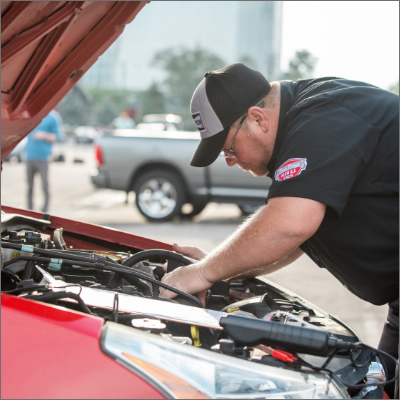
Pep Boys was popular–with consumers, obviously, but also with other business entities as well. Almost purchased by several suitors, Pep Boys was finally acquired in 2016 by Icahn Enterprises as part of its automotive group. With big plans for investment and growth, Pep Boys went private as it started to transform its business. In recognition of the seismic societal shifts driving the need for expert auto care, Pep Boys began to reinvent itself as a service-focused company that only retailed parts in the locations where its customers needed them most.
LEARN MORE

Pep Boys was founded to fill a consumer need. Thanks to passion and hard work, we've never stopped evolving. Through every decade, a new lesson was learned. In response to every market swing and every new technology, an adaptation. From simply making quality automotive replacement parts available at a fair price, our mission has grown to making expert car care simple, accessible, and convenient for everyone. We've always gone further, and that's helped Pep Boys become the household name and iconic brand it is today.
LEARN MORE
